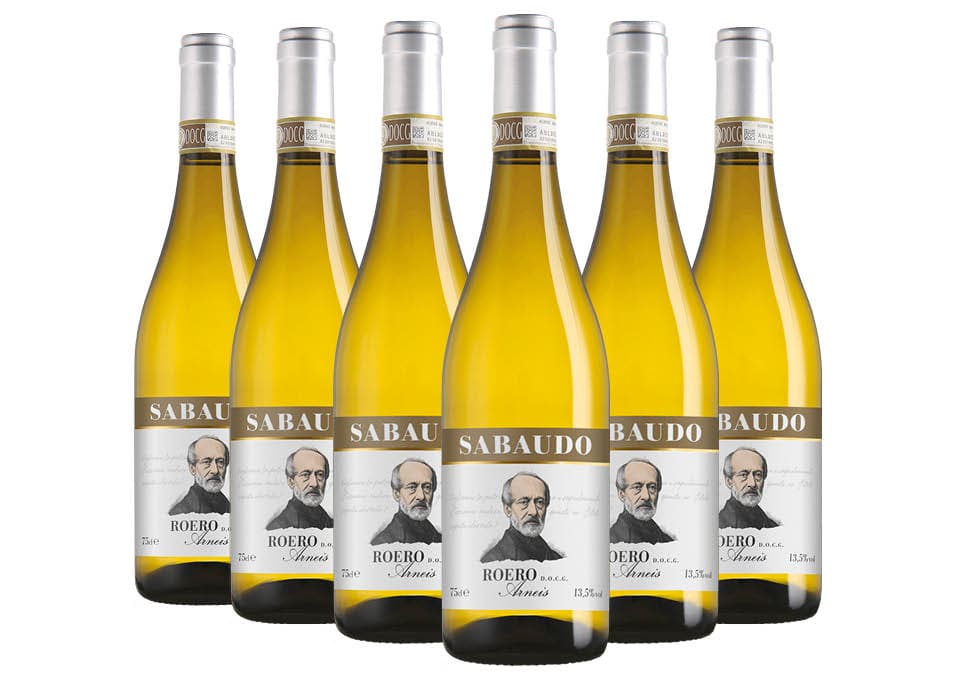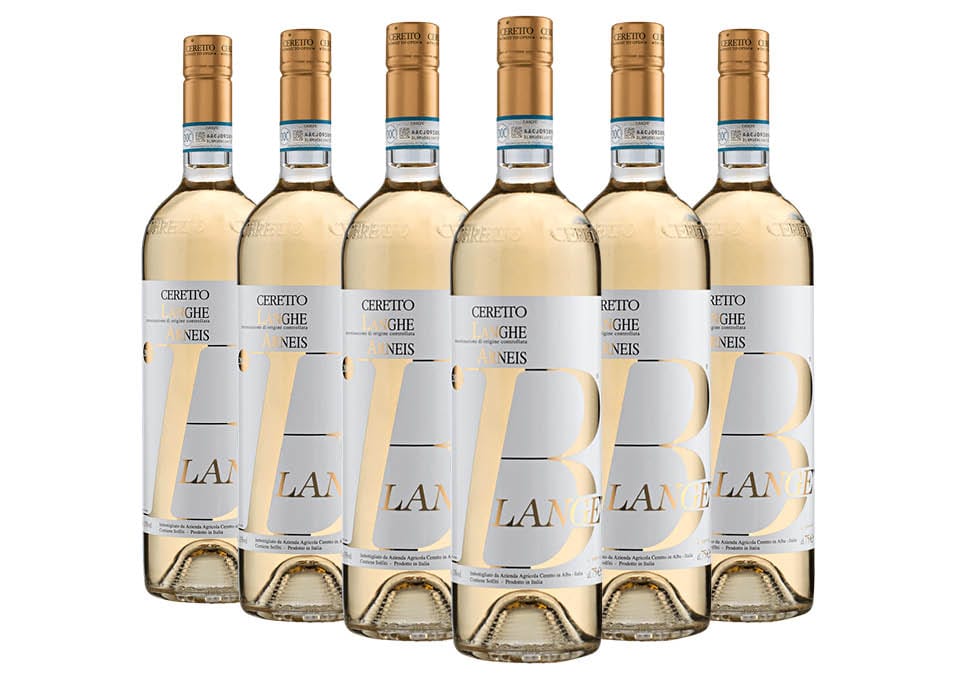Arneis, Piedmont
Arneis is the native Piedmontese white grape variety symbol of Roero. Originally the Arneis grapes were used to soften the Nebbiolo grapes so as to define the wine obtained with them the 'Barolo Bianco'. In the 1970s only Vietti and Bruno Giacosa produced Arneis to the point that only the increase of interest in this variety in the following decades could lead to new plants. The Roero area extends on the left bank of the Tanaro river, right in front of the Langhe hills and the famous villages of Barolo and Barbaresco. In an area very suitable for viticulture, Arneis is quite vigorous, with good productivity and ripening expected by the end of September. Small productions of Arneis also appear in California, Oregon, New Zealand and Australia. The best examples of Arneis tend not to be aged in wood and are drunk within two years of bottling. The wine has a straw yellow color. The olfactory profile is intense and of great elegance, with aromas of flowers, white fruit and tropical nuances. On the palate it has a rich, full, soft, pleasantly fruity bouquet with moderate acidity. Some companies, in addition to still wines, produce sparkling versions, both with the Charmat method and with the Metodo Classico. Arneis is an excellent wine as an aperitif and goes very well with fish or vegetable appetizers, with cereal and vegetable soups, with seafood first courses and more generally with fish menus. Try the combination with tomini, grilled robiola or with a fresh cheese platter.
Why buy Arneis
If you are planning a disengaged aperitif or if you want to open the meal with a wine of great impact, buying Arneis can be the best and most advantageous solution. With its full and varied bouquet, Arneis is able to amaze at the first sip. Easy to appreciate, direct and very balanced, it can be considered a wine within everyone's reach, even for those who, as a non-connoisseur, want to appreciate the aromatic complexity of a wine without encountering excesses or surprises.
What are the best Arneis wines?
The best Arneis are undoubtedly those produced to be consumed very young with good fruit persistence and great aromatic intensity. Reference names in the production can be Malvirà, Bruno Giacosa, Sordo, Cascina Chicco.
Where is Arneis wine produced?
The traditionally most suitable area in which Arneis wine is produced is the Piedmontese one corresponding to Roero, that is the hilly area of the Province of Cuneo which borders the area of Alba and which includes municipalities such as Montà, Montaldo Roero, Vezza d'Alba.
What are the best combinations for Arneis wine?
For the best combinations to suggest compared to Arneis wine, the traditional Turin dishes are certainly the most suitable for enhancing its organoleptic characteristics. Among these, the Arneis-style rabbit, the Tajarin seasoned with butter and sage or white truffle, the raw meat of veal worked with a knife.

Piedmontese wine represents one of the cornerstones of Italian enology, grouping some of the most prestigious appellations especially in the field of red wines such as Barolo and Barbaresco. A land of winemaking tradition since ancient times, Piedmont produces great wines on its hills and on the Alpine and pre-Alpine belts. In these places, which differ thanks to the different geographical and climatic characteristics that characterize them, manual labor is predominant and low yields per hectare are pursued, to enhance the quality of the wines that come to life here.
From the refined and sumptuous reds to the round and fragrant whites, to the inviting and pleasant dessert wines, the varied wine heritage of this region makes it an area of extraordinary excellence, appreciated both nationally and internationally.
Piedmontese red wine
The Piedmontese red wine is mainly obtained from native varieties, which see Nebbiolo, father of the great reds such as Barolo and Barbaresco, but also present in less known but equally interesting reds such as Gattinara, Ghemme, Carema and Fara, as well as that of alternative and original bubbles. Among the reds we certainly cannot forget the Barbera, which finds full-bodied and structured red wines in the Alba area (it is said that "baroleggia"), in Asti wines of great longevity and in the Monferrato sparkling and pleasant reds, famous thanks to "La Monella "By Braida. Other very interesting and highly drinkable reds are Grignolino (the “anarchic” wine according to Veronelli), Dolcetto (with territorial variations, from Ovada to Alba passing through Dogliani) and Freisa. Finally, the Ruché del Monferrato, from a native grape saved from extinction, and the rare Verduno Pelaverga are worth trying. Also of historical importance is a last grape, Brachetto, which has always given rise to the sweet and irresistible Brachetto d'Acqui.
Piedmontese white wine
If the most famous Piedmontese white wine is undoubtedly Gavi, obtained from Cortese grapes, there are other equally interesting and particular wines. For example, we cannot fail to mention the Timorasso from the Tortona hills, also suitable for long aging, or the Roero Arneis, the only white in the Langa area. Also interesting are Moscato and Erbaluce di Caluso which give life to both sweet wines and dry white wines as well as sparkling wines. In Piedmont, however, there are also international white grape varieties, such as Chardonnay, used in the precious classic Alta Langa DOCG method, and Riesling, which is able to give wines of great longevity.
What is the finest Piedmontese red wine?
The finest Piedmontese red wine is undoubtedly Barolo, also known as the king of wines and the wine of kings.
How many Piedmont DOC wines are there?
Piedmont has 41 DOC wines with controlled designations of origin and 18 DOCG wines.
How do you pair a robust Piedmontese red wine?
The perfect pairing with a robust Piedmontese red wine is undoubtedly the one with meats, both in the form of stew and roast, and as a sauce with pasta or ravioli.


















